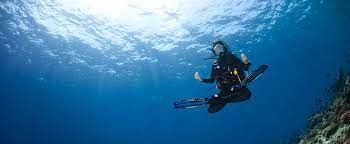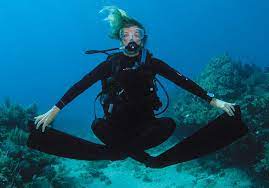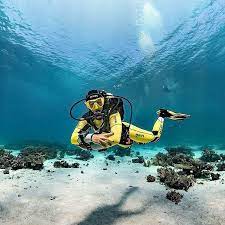Here are 5 practical dive tank carrying solutions: 1) Backpack-style holders (e.g., ScubaPro Roller Backpack, holds 1-2 tanks) for hands-free transport; 2) Wheeled carriers (like Cressi Tank Cart, supports 100kg) for easy rolling; 3) Wall-mounted racks (typically 80) for garage storage; 4) Portable tank slings (nylon straps, under 1kg weight) for quick carrying; 5) Vehicle trunk organizers (non-slip mats + straps) protecting tanks during transport. Choose based on your tank size (standard 80cu ft tanks weigh ~15kg empty) and mobility needs.
Backpack-Style Tank Carriers
These carriers are designed to distribute the weight of a standard 80 cu ft aluminum tank (14-16 kg when empty, 18-20 kg when full) evenly across your shoulders and back, making transport far easier than carrying it under your arm. Most models feature padded straps, adjustable buckles, and reinforced stitching to handle loads up to 25 kg, ensuring durability even with frequent use.
A common complaint, however, is shoulder strain after extended use, especially with heavier steel tanks (which can weigh 25-30 kg full). For this reason, backpack carriers are best suited for short-distance transport—think walking 100-300 meters from your car to the dive site. If you’re covering longer distances, a wheeled option might be better.
Cheaper models often use thin straps that dig into your shoulders after just 10-15 minutes, while higher-end versions include thick foam or gel padding to reduce pressure. Another key feature is storage capacity—some carriers have extra pockets for masks, fins, or dive computers, while others are strictly tank-only. If you frequently travel with gear, look for a model with at least 5L of additional storage space.
They’re lighter than wheeled carts (typically 1-2 kg vs. 4-8 kg), and they don’t require assembly. However, they’re not ideal for everyone—if you have back problems or regularly carry multiple tanks, a different solution (like a cart or sling) might be more practical.
Key Considerations Before Buying
- Weight capacity: Most carriers support 15-25 kg; verify if yours can handle steel tanks.
- Padding thickness: Look for at least 10-15 mm of foam in the straps and back panel.
- Adjustability: Shoulder and waist straps should be fully customizable for different body sizes.
- Durability: 600D polyester or nylon is standard; 1000D fabric is better for rough use.
- Extra features: Side pockets, D-rings, and quick-release buckles add convenience.
Performance Comparison (Average Use Case)
| Feature | Basic Model ($50) | Mid-Range ($90) | Premium ($150) |
|---|---|---|---|
| Max Load | 18 kg | 22 kg | 25 kg |
| Padding | Thin foam | Medium foam | Gel + thick foam |
| Extra Storage | None | 3L pocket | 5L + accessory loops |
| Durability | 1-2 years | 3-5 years | 5+ years |
For occasional divers, a 90 model is usually sufficient. But if you dive weekly or travel often, investing in a 150 carrier with better padding and durability will save you from replacements and discomfort. The sweet spot for most recreational divers is the mid-range (100), balancing cost and long-term usability.
Final Tip: If possible, try before you buy—strap on a loaded tank and walk around for 5 minutes to test comfort. No amount of specs can replace real-world feel.

Wheeled Tanks on the Go
For divers who need to move tanks longer distances (100+ meters) or across uneven terrain like sand, gravel, or boat ramps, wheeled tank carriers are a game-changer. Unlike backpack-style options, these carts let you roll your gear effortlessly, reducing strain on your back and shoulders. A standard 80 cu ft aluminum tank (14-16 kg empty, 18-20 kg full) becomes much easier to handle when mounted on a sturdy cart, especially if you’re transporting two tanks at once (total load ~40 kg).
Most can handle 25-50 kg, with high-end models supporting up to 75 kg—perfect for dive shops or technical divers with multiple tanks. The wheels make a huge difference in effort: pushing a 20 kg tank on a cart requires about 30% less energy than carrying it by hand. However, not all wheeled carriers are equal.
Some carts fold down to 60 cm x 30 cm x 10 cm, fitting easily in a car trunk, while bulkier models may require disassembly. If you’re traveling frequently, look for a cart under 8 kg—anything heavier becomes a hassle to lift in and out of vehicles. A common mistake is choosing a cart with small wheels (under 15 cm diameter), which sink into soft ground. For beach diving, 20-25 cm wheels with wide treads perform best.
Cheap carts often use thin steel tubing (1-1.5 mm thickness) that bends under heavy loads, while premium models feature 2-3 mm aluminum or reinforced steel frames that last 5+ years. The hinges and locking mechanisms are also critical—flimsy ones wobble or collapse mid-transport. If you dive weekly or in harsh conditions, invest in a cart with stainless steel hardware to resist saltwater corrosion.
Key Features to Compare
- Wheel type: Pneumatic (better cushioning) vs. solid rubber (no flats).
- Frame material: Aluminum (lighter) vs. steel (stronger).
- Foldability: Compact designs save space but may sacrifice stability.
- Weight capacity: 25 kg (basic) vs. 50+ kg (heavy-duty).
- Wheel size: 15 cm (minimum) vs. 25 cm (ideal for sand).
Real-World Performance Metrics
- Energy savings: Rolling a 20 kg tank burns ~100 fewer calories per 500 meters than carrying it.
- Speed: On flat pavement, a wheeled tank moves 2-3x faster than hand-carrying.
- Longevity: Cheap carts last 1-2 years with regular use; premium models exceed 5 years.
For recreational divers, a 150 cart with 20 cm wheels and a 30 kg capacity covers most needs. Tech divers or instructors hauling multiple tanks should consider $200+ models with 50 kg+ limits and corrosion-resistant parts. Always check the wheel bearings—sealed units require less maintenance and handle saltwater better.
Pro tip: A good rule of thumb: The tank mount should sit low (within 30 cm of the ground) for stability. If you’re frequently loading/unloading alone, look for a model with a kickstand or parking brake—small details that prevent frustrating rollaways.
Wall Racks for Easy Storage
A standard 80 cu ft aluminum tank (65 cm tall, 18 cm diameter) fits perfectly on most racks, with steel tanks requiring slightly wider spacing (20-22 cm between mounts). Prices range from 200 for commercial-grade stainless steel racks holding 6+ tanks.
Unlike loose storage, they prevent tanks from rolling and banging into each other—critical when dealing with 600 tanks that can't afford valve damage. Most home divers need 2-4 tank capacity, while dive shops opt for 10+ tank systems with reinforced brackets. The load capacity varies by material: plastic-coated steel hooks hold 15-20 kg per slot, while welded aluminum frames support 30+ kg per tank.
A basic 2-tank rack mounts with 4 screws (minimum 8 cm into studs) and takes under 30 minutes to set up. For concrete walls, expansion anchors provide extra security. The key is placement height—mounting too high (over 1.5 meters) makes loading awkward, while too low (under 60 cm) risks kick damage. The sweet spot is 80-120 cm off the ground, aligning with natural lifting motions.
In humid coastal areas, 304-grade stainless steel racks resist rust for 8-10 years, while cheap powder-coated models show corrosion in 2-3 years. For garages with temperature swings (10°C to 40°C), UV-resistant polyethylene coatings prevent cracking. Surprisingly, horizontal storage (tanks lying flat) causes 15-20% faster air retention loss compared to vertical storage due to o-ring stress—something tech divers monitor closely.
Key Performance Metrics
- Space savings: A 4-tank vertical rack occupies just 0.25 m² vs. 0.8 m² for floor stands.
- Damage reduction: Proper racks decrease tank surface scratches by 70-80%.
- Cost per tank slot: 35 (marine-grade aluminum).
For home divers, a 80 rack with 4 coated steel hooks suffices. Dive centers handling 20+ tanks weekly should invest in modular systems (400) with adjustable spacing for different tank sizes. Avoid "universal" racks claiming to fit all 7.25" to 8" diameter tanks—they often leave smaller tanks loose. Instead, measure your exact tank specs (most are 7.25" or 8") and buy accordingly.
Pro tip: Add 1-2 cm of foam tubing to contact points if storing tanks long-term. This prevents neck thread wear and keeps valves cleaner. For shops servicing 50+ tanks/month, consider rotating racks that bring oldest tanks forward—cutting inspection time by 30%.
Final thought: Just 30 cm of wall space can neatly store $2,000+ worth of tanks safely. Skip the milk crates and cinder blocks—proper racks pay for themselves in tank longevity alone.
Lightweight Tank Slings
When you need to move a scuba tank short distances (under 50 meters) without the bulk of a backpack or cart, a tank sling is the simplest solution. These nylon or polyester straps weigh under 500 grams yet support 20-30 kg tanks with ease, making them ideal for boat dives or quick transfers from car to shore.
Unlike rigid carriers, they fold into a 10x15 cm pouch that fits in any gear bag. Most models use 25-38 mm wide straps with 2,000-3,000 kg breaking strength, ensuring safety even with steel tanks. However, comfort varies: unpadded slings dig into shoulders after 5-10 minutes, while 1 cm thick neoprene-padded straps extend comfortable carry time to 15-20 minutes. For occasional use (1-2 dives per trip), basic slings suffice, but frequent divers should invest in ergonomic designs (60) with load-distributing curves.
Durability tests show UV-treated nylon slings last 3-5 years with saltwater exposure, while untreated polyester degrades in 18-24 months. The weakest point is usually the buckle—cheap plastic versions fail at 50-70% of stated capacity, whereas anodized aluminum buckles maintain integrity up to 90%. For safety, avoid slings claiming "one-size-fits-all"; proper fit requires adjustable lengths (120-180 cm) to accommodate different body sizes and tank positions.
Key Selection Criteria
- Weight distribution: Padded slings reduce shoulder pressure by 40-50% vs. bare straps
- Attachment style: D-rings allow one-handed tank release, crucial for boat entries
- Material density: 600D nylon resists abrasion 2x longer than 300D variants
- Saltwater performance: Marine-grade stitching lasts 3x longer than standard thread
For recreational divers, a 35 sling with 5 mm padding and aluminum hardware offers the best balance. Tech divers hauling twin 12L steels (total 25+ kg) should prioritize dual-strap models (70) that split weight across both shoulders. Always check stitching density—at least 6-8 stitches per inch prevents unraveling under load.
Pro tip:For boats, attach a 2-meter safety leash (600 tank isn't worth risking on a $15 strap.
Final verdict: They won't replace carts for 100+ meter transports, but for dock-to-dive transitions, nothing beats their 5-second setup time. Just remember: like any gear, you get what you pay for—a 50 one works and lasts.
Car Trunk Organizers for Dive Tanks
A standard 80 cu ft aluminum tank (65 cm tall, 18 cm diameter) rolling freely in your trunk generates 20+ kg of force during sudden stops—enough to crack plastic trim or dent sheet metal. Dedicated tank organizers solve this with non-slip padding, adjustable straps, and reinforced walls, keeping tanks secure while protecting your car's interior.
Tests show a properly secured tank reduces impact forces by 60-70% during hard braking. Most quality organizers use 10-20 mm thick closed-cell foam that cushions tanks without absorbing water, paired with 2-inch wide nylon straps rated for 50+ kg loads. For divers carrying 2+ tanks, modular designs with separate compartments prevent metal-on-metal contact that causes scratches—critical when dealing with 600 tanks.
A well-designed organizer fits 2 vertical tanks in the same space that would otherwise hold just 1 horizontal tank, while still leaving 30-40% of trunk space free for other gear. The best models feature collapsible sides that shrink to 10 cm thickness when empty, unlike rigid plastic boxes that waste space. For SUVs and hatchbacks, angled organizers that follow the rear seat contour can squeeze in 1 extra tank compared to rectangular designs.
PVC-coated polyester organizers last 3-5 years with weekly use, while heavy-duty 600D nylon versions withstand 5-8 years of saltwater exposure. The stitching quality matters most—look for double-stitched seams with UV-resistant thread that maintains 80% strength after 2 years of sun exposure. Cheap organizers often skimp here, with single stitching that fails after 6-12 months of tank vibrations.
Key Features Comparison
- Load capacity: Basic = 25 kg, Premium = 50+ kg
- Tank protection: 1.5 mm foam = minimal, 3 mm memory foam = premium
- Install time: Hook-and-loop straps = 30 sec, Buckle systems = 2 min
- Multi-use potential: Add-on pockets hold 5-10 kg of additional gear
For weekend divers, a 60 universal organizer with 15 mm foam and 2 straps provides adequate protection. Frequent travelers should consider custom-fit models (150) that match their vehicle's exact dimensions—these typically offer 20-30% more usable space than generic versions. The most innovative designs include drainage grommets to let water escape and reflective strips for nighttime safety.
Pro tip: Place a silicon mat (15) under your organizer to prevent sliding—this simple addition reduces tank movement by 40% on winding roads. For extra security, add 1-2 bungee cords ($5 each) across the top when transporting steel tanks, which can shift more than aluminum.





Leave a comment
All comments are moderated before being published.
Situs ini dilindungi oleh hCaptcha dan berlaku Kebijakan Privasi serta Ketentuan Layanan hCaptcha.